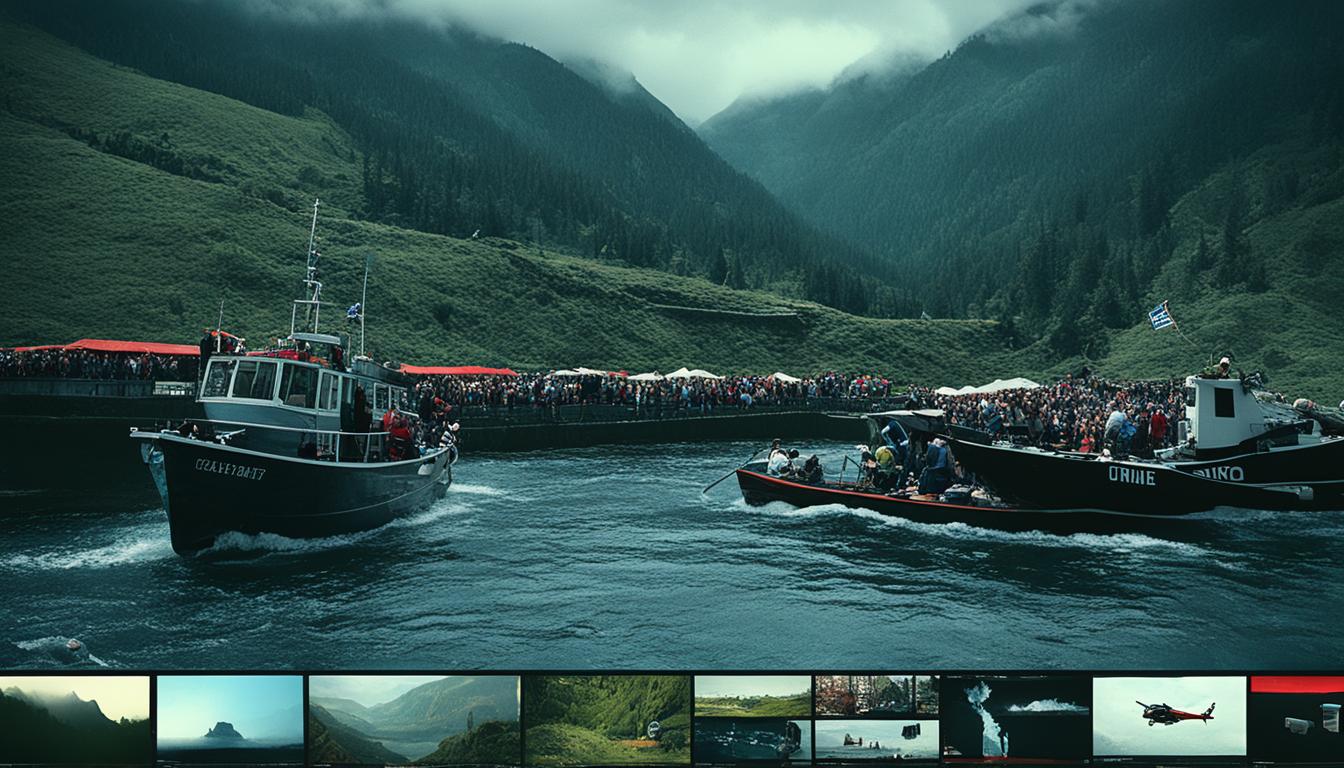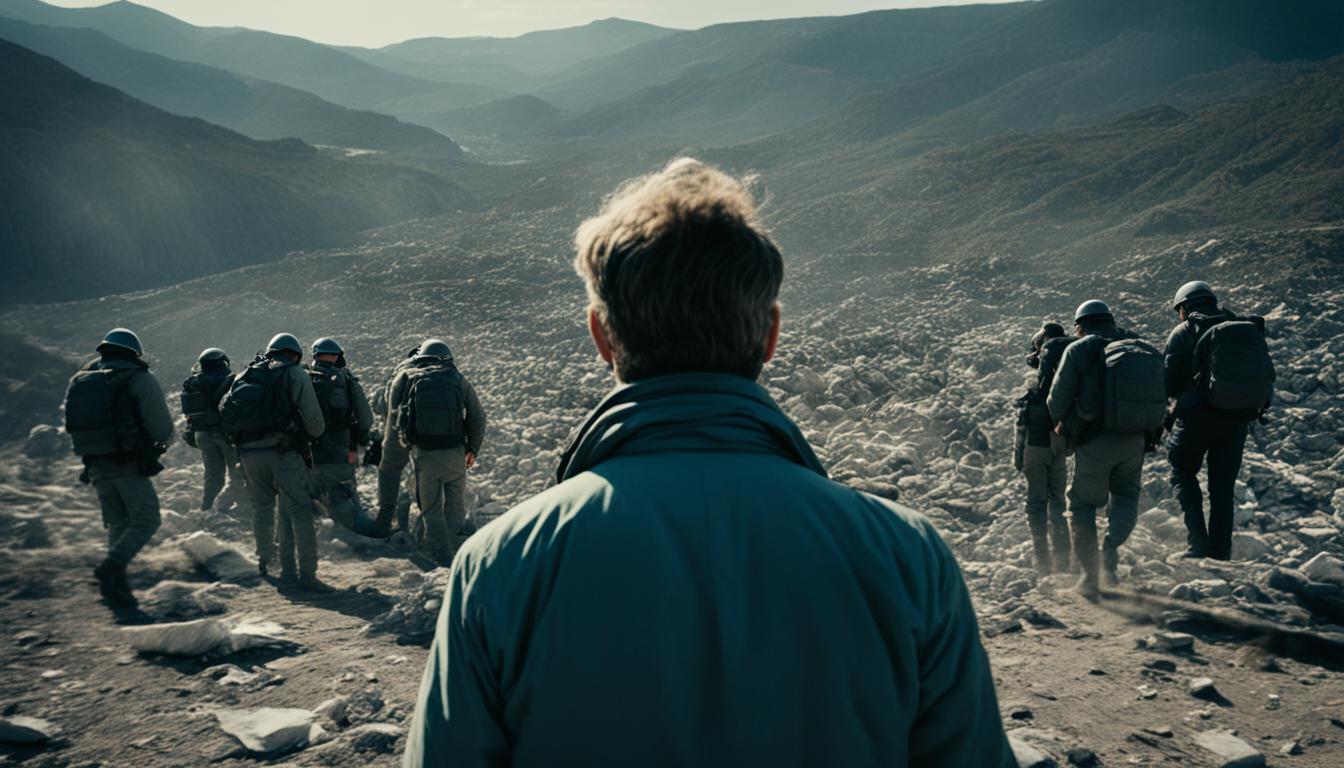Welcome to our article on the role of multimedia in documentary projects. In recent years, the use of multimedia in documentaries has become increasingly prevalent. As filmmakers, we have witnessed the transformative power of incorporating various forms of media, such as audio, video, images, and interactive elements, into our storytelling. Multimedia technology has revolutionized the way we engage with our audiences and enhance their understanding of complex subjects.
By integrating multimedia elements into our documentaries, we can create immersive experiences that captivate viewers and allow them to dive deeper into the narrative. Whether it’s through interactive features, virtual reality, or multimedia tools, our films have the potential to leave a lasting impact on audiences. The possibilities are endless, and we are constantly exploring new ways to push the boundaries of storytelling using multimedia technology.
Throughout this article, we will delve into the benefits and significance of using multimedia in documentary projects. We will examine the evolution of interactive documentary, explore the impact it has had on filmmakers and audiences alike, and showcase case studies of successful documentaries that have effectively utilized multimedia elements to enhance their storytelling.
So join us as we embark on a journey through the exciting world of multimedia in documentary projects, and discover how this innovative approach is shaping the future of the filmmaking process.
Key Takeaways:
- Using multimedia in documentary projects enhances audience engagement and understanding.
- Interactive documentary allows for active audience involvement and a more comprehensive experience.
- Multimedia elements in documentaries provide creative storytelling techniques and collaborative opportunities.
- Technology in documentaries opens up new avenues for social change and advocacy.
- Successful documentaries have effectively utilized multimedia elements to enhance their impact and storytelling.
The Evolution of Interactive Documentary
Interactive documentary, also known as i-doc, has revolutionized the way we tell stories. Unlike traditional linear narratives, i-docs allow audiences to actively engage with the content, creating a more immersive and interactive experience. The use of multimedia technology in i-docs has drastically expanded the possibilities for documentary filmmakers, enabling them to harness the power of multimedia tools to enhance storytelling.
By incorporating various multimedia elements, such as audio, video, images, and interactive features, filmmakers can take storytelling to new heights. These multimedia tools provide a dynamic and engaging platform for documentaries, allowing filmmakers to captivate the audience and deliver a more comprehensive narrative.
One of the most significant advantages of using multimedia in storytelling is the ability to create interactive experiences. Whether it’s through mouse-clicking, touch-screen interactions, sensor activations, or live performances, multimedia empowers filmmakers to craft documentaries that actively involve the audience. This level of interactivity brings the story to life and fosters a deeper connection between the viewers and the subject matter.
Moreover, multimedia applications in documentaries allow for a multi-dimensional approach to storytelling. Filmmakers can incorporate different media formats to present information from various perspectives, creating a more comprehensive and nuanced narrative. This enables the audience to gain a deeper understanding of the subject matter and encourages critical thinking and engagement.
Additionally, the use of multimedia tools for documentaries opens the door to innovative storytelling techniques. Filmmakers can leverage technology to seamlessly integrate graphics, animation, and data visualization into their narratives, enhancing the overall visual appeal and impact of the documentary. This creative use of multimedia not only adds depth to the storytelling but also offers a unique and memorable viewing experience for the audience.
“The power of multimedia in documentary projects lies in its ability to immerse the audience in the story and create a more engaging and impactful experience.”
Key Benefits of Multimedia in Documentaries:
- Enhances engagement and interactivity
- Provides a multi-dimensional storytelling experience
- Fosters deeper understanding and critical thinking
- Offers creative opportunities for innovative storytelling techniques
Examples of Multimedia Applications in Documentaries:
- The Bully Project (2011): This documentary incorporated an interactive website that allowed viewers to explore bullying-related content and resources, creating a more interactive and educational experience.
- Life in a Day (2011): This film used user-generated content from around the world to create an immersive and collaborative documentary experience, showcasing the power of multimedia in storytelling.
- Beyond the Game (2014): This documentary utilized virtual reality technology to transport viewers into the world of professional eSports, providing an immersive and visually stunning experience.
The Impact of Interactive Documentary
The incorporation of multimedia in documentary projects has had a significant impact on both filmmakers and audiences. From a filmmaker’s perspective, multimedia production allows for more creative storytelling techniques and opportunities for collaboration across disciplines. It also provides a platform for exploring complex topics and multiple perspectives.
“The use of multimedia technology in documentaries has revolutionized the filmmaking process. It allows us to incorporate various forms of media, such as audio, video, images, and interactive elements, to create a more engaging and immersive documentary experience.”
For audiences, multimedia elements enrich the documentary experience by providing a deeper understanding of the subject matter and fostering a sense of connection. Through the use of technology in documentaries, filmmakers are able to engage viewers on a more emotional and intellectual level.
The Benefits of Multimedia in Documentaries
The benefits of incorporating multimedia in documentaries are numerous. It allows filmmakers to:
- Create a more immersive and interactive experience for the audience
- Enhance storytelling through the use of audio, video, and visual elements
- Reach larger and more diverse audiences through online platforms and streaming services
- Explore complex topics and multiple perspectives in a comprehensive and engaging manner
The role of technology in documentaries goes beyond just enhancing the filmmaking process. It has opened up new avenues for social change and advocacy. Documentaries that utilize multimedia elements have the power to raise awareness, inspire action, and influence public opinion.
The Future of Multimedia in Documentary Filmmaking
As technology continues to advance, the role of multimedia in documentary projects will only continue to grow. Filmmakers will have access to new tools and techniques to push the boundaries of storytelling and create impactful and thought-provoking documentaries. The benefits of multimedia in documentaries will extend beyond entertainment, shaping the future of the industry and enabling positive social change.

| Documentary | Main Multimedia Element | Impact |
|---|---|---|
| Bully | Interactive features | Raised awareness about bullying in schools and sparked conversations |
| Tales From the Organ Trade | Virtual reality | Provided an immersive experience for viewers and highlighted the ethical issues surrounding organ trafficking |
| Herman’s House | Animation | Explored the concept of imprisonment through art and storytelling |
| The Invisible War | Personal testimonies | Exposed the prevalence of sexual assault in the military and led to policy reforms |
| How to Survive a Plague | Archival footage | Documented the AIDS epidemic and the activism that led to significant advancements in treatment |
Case Studies: Multimedia in Successful Documentaries
Several successful documentaries have effectively utilized multimedia elements to enhance their impact and storytelling. These case studies demonstrate the power of multimedia in documentary projects and how it can contribute to the success and effectiveness of the films.
“Bully”:
The documentary “Bully” used interactive features to raise awareness about bullying in schools. By incorporating multimedia elements such as interviews, videos, and images, the film created an immersive experience for viewers, allowing them to better understand the impact of bullying on the lives of children.
“Tales From the Organ Trade”:
In the documentary “Tales From the Organ Trade,” virtual reality was used to provide an immersive experience for viewers. By using multimedia technology, the film allowed audiences to step into the shoes of those involved in the controversial organ trade, promoting a deeper understanding of the complexities and ethical dilemmas surrounding the issue.
“Herman’s House”:
The documentary “Herman’s House” incorporated multimedia elements to explore the story of a man named Herman Wallace, who spent over four decades in solitary confinement. Through a combination of interviews, animations, and archival footage, the film offered a multi-dimensional portrayal of Herman’s experience, shedding light on the human rights implications of long-term isolation.
“The Invisible War”:
In “The Invisible War,” multimedia elements were used to address the issue of sexual assault within the U.S. military. The film combined personal testimonials, images, and expert interviews to create a compelling and informative narrative that showcased the systemic failures and the impact of sexual assault on victims and the military community.
“How to Survive a Plague”:
“How to Survive a Plague” utilized multimedia elements, including archival footage, interviews, and photographs, to document the early years of the AIDS epidemic and the activism that emerged from the crisis. By incorporating these multimedia tools, the film provided a comprehensive and emotionally impactful account of the struggle for LGBTQ+ rights and access to life-saving medications.
These case studies highlight the successful use of multimedia in films, demonstrating how the integration of various media elements can enhance storytelling, create immersive experiences, and raise awareness about important social issues. By leveraging the power of multimedia technology, documentary filmmakers can captivate audiences and inspire social change.
Conclusion
The role of multimedia in documentary projects is paramount. It has completely revolutionized the way filmmakers tell stories and engage with their audiences. By incorporating various multimedia elements, such as audio, video, images, and interactive features, documentaries have become more immersive, informative, and impactful. The use of technology in filmmaking has opened up new avenues for creativity and collaboration, allowing filmmakers to push the boundaries of storytelling.
With the advancements in multimedia technology, documentaries have become more than just passive viewing experiences. They now offer interactive and immersive experiences that captivate the audience, allowing them to actively engage with the content. This level of interactivity fosters a deeper connection between the viewer and the story being told.
The role of multimedia in documentaries will continue to grow as technology advances further. Filmmakers will have even greater opportunities to experiment with different forms of media and create unique storytelling experiences. As we embrace this evolution, multimedia will become an integral part of the documentary industry, shaping the future of storytelling.
FAQ
What is the role of multimedia in documentary projects?
Multimedia in documentary projects enhances storytelling by incorporating various forms of media, such as audio, video, images, and interactive elements. It allows for a more engaging and comprehensive documentary experience.
How does multimedia technology benefit documentaries?
Multimedia technology offers a wide range of applications in documentaries, including creating immersive experiences and providing interactive storytelling opportunities. It enhances the audience’s understanding and engagement with the subject matter.
How has multimedia production revolutionized the filmmaking process?
Multimedia production in documentaries allows for more creative storytelling techniques, opportunities for collaboration, and exploration of complex topics. It also opens up new avenues for social change and advocacy.
Can you provide examples of successful documentaries that have utilized multimedia elements?
Yes, examples include “Bully,” which used interactive features to raise awareness about bullying, and “Tales From the Organ Trade,” which incorporated virtual reality for an immersive experience. Other notable examples include “Herman’s House,” “The Invisible War,” and “How to Survive a Plague.”
What is the significance of multimedia in documentary projects?
Multimedia in documentaries enriches the audience’s experience, provides a deeper understanding of the subject matter, and fosters a sense of connection. It has revolutionized the way filmmakers tell stories and engage with their audiences.
How Can Multimedia Enhance the Impact and Success of Documentary Projects?
Multimedia can greatly enhance the impact and success of documentary projects by reaching a wider audience through various platforms. By incorporating interactive elements, such as videos, infographics, and animations, documentaries can engage and educate viewers more effectively, thus increasing the potential for funding and grants for documentaries.




